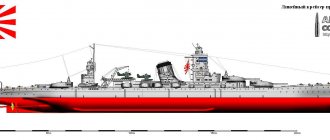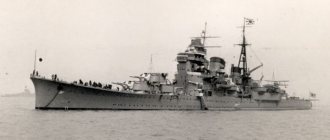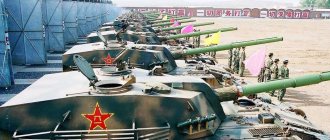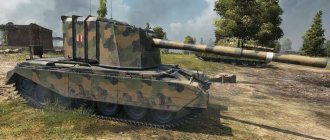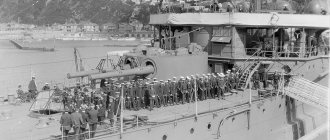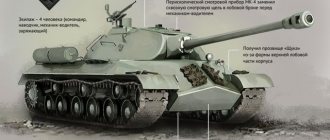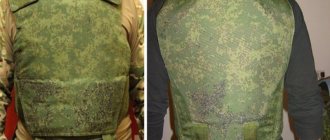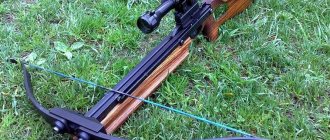We have all heard about people like kamikazes. There was no end to those who wanted to try their hand at this matter, because for their people they were heroes, and they terrified the enemy. What else was connected with the mass nature of such a phenomenon, what imprint does it leave on the modern inhabitants of the island state, and which manufacturers had their hands in it? In this article we will talk about other kamikazes - underwater ones. Not everyone has heard of them, but this page was also in the Japanese history book.
Kamikazes were serious weapons.
First of all, it is worth understanding where, as they say, legs grow from, and what death for the good of others means to the Japanese.
Even now, Japan leads the ranking of countries in the number of suicides per capita. In Japanese culture and teachings, suicide has always been considered something different than in other cultures. Especially if it involves winning a battle or avoiding being captured by the enemy. Even the well-known word “harakiri” also refers to Japanese culture and is an integral part of bushido.
Bushido (translated from Japanese as “the way of the warrior”) is the code of the samurai, a set of rules, recommendations and norms of behavior for a true warrior in society, in battle and alone, a military male philosophy and morality, rooted in ancient times. Initially it was a set of general rules for a warrior, but later merged with the culture of the samurai and became a set of rules of samurai ethics.
Who are kamikazes
I think few people will have to explain that the term “kamikaze” was mainly used by military pilots at the end of the Second World War. They died for their country, but there was one “but” - they did not have the right to survive after the battle. There were exceptions and we will talk about them below, but the exceptions only confirm the rule.
Kamikaze squad before a combat mission (everyone is happy)
The history of the term “kamikaze” dates back to 1281, when a sudden hurricane allowed the troops of Kublai Khan to be defeated. That hurricane was called “Divine Wind,” which translated means “kamikaze.” That is why this name was chosen for the units that were supposed to destroy American ships during the Second World War.
The final stage
The frequency of kamikaze attacks peaked in April–June 1945 during the Battle of Okinawa. On April 6, 1945, during Operation Kikusui ("floating chrysanthemums"), aircraft carried out hundreds of strikes.
In some cases, not only the pilot was on board the same aircraft, but soldiers were allowed to fly with officers if they volunteered to take part in such an honorable mission. There is a point of view that the first kamikazes were Lieutenant Takeshi Kosai and an unknown sergeant, who, hanging two 100-kilogram bombs from their “zeros”, took off on September 13, 1944 from the island of Negros (Philippines) with the goal of ramming American ships. On one of the last missions, the pilot even managed to get his wife on board so she could lose her life with her husband.
Young kamikaze pilots are said to have frequently flown into southwest Japan over the 922 m (3,025 ft) high Mount Kaimon. The mountain is also called "Satsuma Fuji" (meaning a mountain similar to Mount Fuji but located in the Satsuma Province region). The suicide pilots looked over their shoulders to see the mountain, the southernmost on the Japanese mainland, bid farewell to their country and saluted the mountain. Residents of Kikaishima Island, east of Amami Oshima, said suicide squad pilots dropped flowers from the air as they departed for their final missions.
Hiroshima and Nagasaki. Is President Harry Truman a "killer"? 16+
Japan lost the war, and after the end of World War II it was decided to abolish Shinto as the state religion, the emperor renounced his divine title. Thus, it was recognized that Japan and the Japanese were not an exclusive race that was superior to others, and they decided to prohibit war by law in the future.
The war is short in US and Japanese textbooks
Views: 2,505
Share link:
- Tweet
- Share posts on Tumblr
- Telegram
- More
- by email
- Seal
What kamikazes looked like
In general, kamikazes were not much different in appearance from ordinary Japanese military pilots of that era. The main difference was the headband with the image of the Japanese flag and hieroglyphs.
Subscribe to our channel in Yandex Zen. There you can find a lot of interesting things that are not even on our website.
As a rule, two hieroglyphs were written, namely, “Kami” (in the Japanese reading “Jin”) and “Kaze”. Accordingly, the same “Divine Wind”. But there were exceptions, when the pilots themselves wrote on their armbands what came to their minds at the moment of their emotional patriotic upsurge.
Nothing could stop them.
Attack on Pearl Harbor
On December 7, 1941, Japan dealt a crushing blow to the US military base at Pearl Harbor, located on the Hawaiian Islands.
This attack began completely suddenly, without a prior declaration of war. Japanese aircraft carriers of the Imperial Navy, maintaining complete radio silence, approached from the northern side of the island of Oahu, and then the planes began to attack the US base and airfields. The main goal of such a daring and destructive attack on Pearl Harbor was the total destruction of American warships in the shortest possible time. In the event of a successful outcome of hostilities, Japan hoped to provide itself with complete freedom to operate in the southern seas. In addition, the Japanese hoped that such a surprise attack would reduce the morale of American soldiers. The entire operation from start to finish was developed and approved by the Japanese commander-in-chief of the fleet, Yamamoto Isoroku.
Admiral Isoroku Yamamoto (1884-1943)
The Japanese military had grandiose plans for these military operations. The basis and success of such a war was surprise and lightning speed of action. The Japanese leadership realized that they could not win a protracted war, since the United States had tremendous economic power that would help the Americans quickly restore their strength. As a result, the main objective of the surprise attack on Pearl Harbor was the destruction of the US Navy.
In addition to aviation, compact submarines - “baby boats” - took part during the fighting at Pearl Harbor. The so-called “baby boats” were called “Kyuryu” - dragon and “Kairyu” - sea dragon, and the very miniature magnetic submarines were called “Shinkai”. These submarines were capable of traveling no more than 1,000 miles at a speed of 16 knots, and were controlled by two people. These miniature submarines were usually used for torpedo attacks inside the harbor, or for ramming. It was planned in advance that the crew of these submarines would return home, but this was just a theory. During the attack, 8 out of 9 officers were killed. In the Japanese Yasukuni Shrine, these eight brave officers became objects of worship. Ninth Officer Sakamaki was universally disgraced. This happened because his submarine got stuck near the shore, as a result of which he was captured. He was unable to commit suicide (commit hara-kiri) due to severe wounds, but this fact could not be an excuse for the Japanese, so a stain of shame fell on the crew under his command.
Reasons for the appearance of kamikazes
One of the main reasons for the appearance of kamikazes is the poor technical equipment of the air force. The planes were of average quality, often broke down and did not have outstanding flight characteristics. All this prevented the pilots from fully going on missions and returning from them.
There was no time to develop new types of aircraft, but it was quite possible to increase the production of existing ones with even more defects (due to accelerated production and savings). We saved money on literally everything. For example, the Nakajima Ki-115 Tsurugi model did not even have a landing gear. The plane rolled along the runway on stands, which then remained on the ground. The landing gear was not needed for landing, so the trolley was placed under another aircraft and the takeoff procedure was repeated.
Airplane Nakajima Ki-115 Tsurugi (the front landing gear fell off during takeoff, the rear landing gear was missing at all)
Against the backdrop of the fact that giving one’s life for one’s homeland has always been honorable for the Japanese, and the fact that this idea was further cultivated by the country’s leadership, thoughts about a new type of warrior began to arise. So, on the basis of the first Japanese air fleet, squads of suicide pilots were formed.
To recruit volunteers, the Japanese received invitations to join the kamikaze ranks, which could not be ignored. The fact is that the invitation contained a question framed in such a way that a negative answer meant an admission of cowardice. This is unacceptable for the Japanese.
The Japanese know how to develop technology: Japan has developed tires that generate electricity
The third factor in the appearance of kamikazes was the additional psychological advantage in battle. The appearance of planes that flew with a full bomb load and crashed into ships put very strong pressure on the enemy and demoralized him.
This is what an attack on enemy warships looked like
How they were received in kamikaze
Since there were a lot of people willing, and queues lined up at the military registration and enlistment offices of those who wanted to give their lives for their homeland, and at the same time receive glory and honor, certain requirements were placed on them, and not everyone passed the draft. Apart from the basic requirements needed to fly an airplane, the applicant had to have no family. This was a requirement.
There is a case in history when Hajime Fuji really wanted to join the “divine wind” squad, but he had a wife and two children. On this basis he was refused. Without hesitation, the wife decided to kill the children and herself so that her husband could accomplish the feat. It looks a little creepy, but this is how the kamikaze work was designed. This somewhat dispels their romantic image.
Pilots from the kamikaze squad.
After a potential kamikaze was accepted into the squad, he had to undergo training. It cannot be called difficult and long, since he only needed basic aircraft control skills and some psychological preparation. Naturally, it was easier for the current pilots.
Interesting facts about kamikaze
The kamikazes could not return back, since there was only fuel in their tanks to reach the target. Plus the targets were very far away. This was an advantage that offset the disadvantages of the aircraft. Japanese planes of that time could not fly far. If they still had to return to base, the flight time would be reduced by at least half. Instead, they flew far, completed their mission and did not return.
Of course, it was not always possible to complete the mission, since most of the planes were shot down by enemy ships, but some of them were still sunk. Japan and the United States publish different data, however, the number of sunken ships was in the dozens, and the number of heavily damaged ships was in the hundreds.
As I said above, the pilots could not return from the mission, but they did not do so. There were cases when, after a flight, the pilot changed his mind about dying, but this was rather the exception. Despite the prohibition on returning from a regular flight, this did not contradict the pilot’s obligation to return if it was impossible to complete the mission. For example, bad weather, technical malfunction and the like.
In order not to miss anything interesting from the world of high technology, subscribe to our news channel on Telegram. There you will learn a lot of new things.
The record holder in this regard was pilot Yamomura, who returned from a mission alive three times. At first his plane was shot down, but he was rescued by fishermen and returned to base. On his second flight, he was hampered by weather conditions and the inability to properly aim the plane at the target. The third flight ended in technical problems, and he had to return again. So the pilot, who passionately wanted to give his life for his people, survived the war and lived for many more years. You could say, “a winner in life.”
Seppuku is hara-kiri
This cult of divine origin was introduced by Jimmu in 660 BC, who proclaimed himself the first emperor of Japan. And somewhere during the Heian era, in the 9th-12th centuries, an important component of the code appeared - the ritual of seppuku, better known by its second name “harakiri” (literally “cutting the belly”). This was suicide in the event of an insult to honor, committing an unworthy act, in the event of the death of one’s overlord, and subsequently by a court verdict.
The fact that in the process of suicide it was not the heart that was affected, but the abdomen was ripped open, is explained simply: according to the philosophy of Buddhism, in particular the teachings of the Zen sect, it is not the heart, but the abdominal cavity that is considered as the main central point of a person’s life and thus the seat of life.
Harakiri becomes widespread during the period of internecine wars, when opening the abdomen begins to prevail over other methods of suicide. Very often, bushi resorted to hara-kiri in order not to fall into the hands of enemies when the troops of their clan were defeated. With the same samurai, they simultaneously made amends to their master for losing the battle, thus avoiding shame. One of the most famous examples of a warrior committing harakiri upon defeat is considered to be the seppuku of Masashige Kusunoki. Having lost the battle, Masashige and 60 of his devoted friends performed the hara-kiri ritual.
Seppuku or hara-kiri is a common phenomenon among Japanese samurai
The description of this procedure is a separate topic, so it’s only worth noting one more important point. In 1878, after the fall of the last of the shoguns, the military-feudal rulers of Japan who had ruled the country for six centuries, power was concentrated in the hands of Emperor Meiji, who set a course for building capitalism. And a year later, one of the richest people in Japan, a certain Mitsuri Toyama, together with his influential friends, created the secret society “Genyosha” (“Black Ocean”), which set itself the goal of creating a military-political doctrine of Japan on the basis of the official religion of Shintoism. Being an enlightened man, Toyama saw seppuku as a relic of the past, but introduced a new meaning into this rite: “suicide as an example of fidelity to duty for the sake of the prosperity of the Motherland.”
Who built kamikaze planes
The planes used for the deadly rams were built in several factories in Japan. As a rule, they had a somewhat unified design, which made it possible to install on them different engines with a power of 800 hp or more. up to 1300 hp
Kamikaze planes.
Among the main manufacturers are Yokosuka and Nakajima. In addition, aircraft from the well-known Kawasaki company were often used for attacks. Now it is known primarily for its motorcycles, but in those days they made airplanes, which were very useful to the Japanese in the war. If you have heard about the companies listed, write about it in our Telegram chat.
By the way, this is largely why Japanese motorcycles and cars are now considered the best in the world. After the war, Japan did not have the right to produce military aircraft, and many manufacturers switched to goods for peaceful purposes, directing all their efforts, resources, developments and hard work specifically to this area. But this is a topic for a separate article.
Underwater kamikaze
While kamikazes flew at enemy ships from the air like a deadly whirlwind (or divine wind), something no less terrible was happening under water. Suicide bombers worked inside special submarines, which were more torpedoes than truly deep-sea vehicles.
The beginning of such wars was marked by the battle near Midway Atoll near Hawaii. The most serious battle in that part of the globe in the Second World War unfolded there. The Imperial Army lost 4 aircraft carriers, numerous warships, and enough personnel to undermine the morale of the survivors.
The fleet needed new warriors, with a sparkle in their eyes, with a steady hand and not afraid of death. They appeared, and the same submarines were developed especially for them, called Kaiten (translated from Japanese as “will of heaven”).
Wash the heels of a sergeant for the Emperor - training in the Japanese army
The Japanese Empire at the end of the 19th and beginning of the 20th centuries nurtured ambitions to expand living space, and, naturally, for this it needed a powerful army and navy. And if on the technical side the Japanese did a lot, turning a backward army into a modern one, then on the psychological side they were greatly helped by the warlike mentality that had developed over many centuries.
The Code of Bushido required the samurai to unquestioningly obey the commander, contempt for death and an incredible sense of duty. It was these traits that were most developed in the imperial army. And it all started from school, where the boys were taught that the Japanese were a divine nation, and the rest were subhumans who could be treated like cattle.
The young Japanese was told that he was a descendant of divine ancestors, and his whole life was a path to glory through military exploits in the service of the Emperor and superior officers. Here, for example, is what a Japanese boy wrote in an essay during the Russo-Japanese War of 1904-1905:
I will become a soldier to kill Russians and take them prisoner. I will kill as many Russians as possible, cut off their heads and present them to the emperor. And then I’ll rush into battle again, I’ll get even more Russian heads, I’ll kill them all. I will become a great warrior.
Naturally, with such desires and support from society, the boy grew into a fierce warrior.
The future soldier learned to endure hardships from an early age, and in the army this skill was brought to perfection not only through jogging and exercises, but also through the bullying of colleagues and senior ranks. For example, a senior officer, who felt that the recruits had not given him the military salute well enough, had the right to line them up and slap each one in the face. If the young man fell from a blow, he had to jump up immediately, standing at attention.
This harsh attitude was complemented by ingratiation with higher authorities. When, after a tiring march, the senior man sat down on a chair, several soldiers immediately raced to unlace his shoes. And in the bathhouse there was literally a line lining up to rub the officer’s back.
As a result, the combination of powerful propaganda and education, coupled with difficult service conditions, created fanatical and resilient soldiers, extremely disciplined, persistent and monstrously cruel.
What is kaiten
Kaitens were small torpedo boats attached to a carrier submarine. The total number of such “stuck” was from 4 to 6. The large submarine cruised under water and at the right moment the captain gave a command to special people who made their way through a narrow pipe inside the kaiten, took their places and went on the final attack.
Launching a kaiten into the water
It is worth noting here that at first they were equipped with an ejection system, but later they abandoned it, and there was so little space that even the Japanese felt cramped inside. Largely because of this, the gun often did not reach the target. The man simply suffocated and the kaiten drowned. In later models they were equipped with timers so that they would somehow explode.
Come to our special Telegram chat. There is always someone to discuss news from the world of high technology with.
Management was difficult, and there was no place to train staff. Schools appeared spontaneously and were often almost immediately destroyed by American bombers. In addition, the “pilots” acted almost blindly. The periscope could be raised for a maximum of three seconds so that the boat could not be detected. Therefore, the kaitens were controlled almost blindly.
Controlling a kaiten was primitive. By and large, only two handles were provided, one of which was responsible for speed, and the second for rotation. There was a lever at the feet that released intake water into the compartments to compensate for buoyancy.
Appearance of kaiten
Kaitens operated on pure oxygen. Such engines allowed acceleration to 40 knots. This was more than enough to destroy any ship of that time and enhanced the effect of the explosion. The disadvantage of the design was that the boat was made of steel with a thickness of only 6 mm. This thickness was chosen to save money, but after several raids the kaitens began to rust, and after a deep dive they could be flattened.
Kamikaze fate
I don’t think it’s worth saying that with the modern capabilities of technology, there is no point in putting suicide bombers on it. To train a pilot you need to spend several years and a lot of money, so every pilot is worth its weight in gold. Missiles can hit any target, and the ethical standards of the modern world do not allow people to be sacrificed just like that.
That is why there are no kamikazes now. Although, such a profession exists. This shows that many Japanese are still willing to give their lives for their homeland. Against the backdrop of all the events, the attitude towards death that I spoke about at the beginning of this article remained in the blood of the Japanese. This is what leads to sad statistics and a large number of suicides in Japan. Not the most positive note to end the article on. But the topic is not the most rosy. It is only from the outside that kamikazes seem to be romantics; in reality, everything was different.
History of Japanese suicide bombers
Of great interest to people who study military history are not large-scale battles, but those actions that a person performs alone, ultimately revealing his superiority over a machine.
Special special missions that involve mining ships and other similar acts of sabotage are directly related to mortal risk. Any saboteur with special training, inspired by a sense of patriotism and with confidence in his fearlessness and strength, consciously takes such a risk. Such features are characteristic of all special forces in the world. But this does not apply to the Japanese, since they go on a mission not with the thought that they are exposing themselves to mortal risk, but with the thought of death. The appearance of such a strong desire for death among the Japanese is rooted in the ancient Japanese religion of Shinto, which surprisingly gets along well with Buddhism.
First Mongol invasion of Japan
The first mention of suicide bombers was discovered in the 13th century. At that time, in 1260, the grandson of Genghis Khan, Kublai Khan, ascended the Mongol throne. After the Mongols defeated China, they founded a new dynasty of Chinese emperors - the Yuan. Mongol troops then headed to Sumatra and Java, and attacked Vietnam and Burma. All of Central Asia, Rus', the Far East, part of Middle Asia, the Caucasus, etc. lay under the Tatar-Mongol yoke, but only Japan remained unconquered.
Kublai Khan and the conquest of Japan
The Great Khan sent an envoy to Japan in 1266, demanding unconditional submission to the Mongols. But the ruler of Japan, Hojo Tokemuni, rejected the Mongol demand, thereby incurring the wrath of the Great Khan. The beginning of this war in Japanese history is called "Genko". Kublai was infuriated by such a refusal, so it was decided to launch a campaign of conquest against Japan. In November 1274, a huge Mongol flotilla consisting of 1000 ships with an army of 50 thousand on board set out from the Korean port of Happo towards the Japanese islands. They hoped to conquer Japan using the same tactics they used to conquer vast areas of Europe and Asia, using huge numbers of cavalry units and their own special tactics. Such a huge number of soldiers would easily kill all the few Japanese samurai squads. The Japanese did not use large armies for battle, since a samurai for them meant a lone warrior. It was important for the Japanese that the fight be beautiful and according to the rules. Before the start of the battle, they shot an arrow (Kaburai) towards the enemy, which was a challenge to a duel. Then their best wars came out and demanded opponents, after 100 knights, against the same number, and then the army. But, alas, this tactic failed them, since the Tatar-Mongols lacked any concept of military honor. The Mongols surrounded individuals and killed them with blows from behind, and also used poisoned arrows, which was not acceptable for samurai. For these reasons, Japan began to lose the war without causing much damage to the enemy.
After the first easy victory, the Mongols began to advance further, and the island of Kyushu became their next target. It was obvious that the Japanese did not have enough strength to repel the attacks of a large enemy. But everything changed in a place called Hakata. There the Mongol army met fierce resistance from a small but brave and well-trained detachment of samurai. Stubborn resistance lasted until sunset, then the Mongol military commander decided to retreat to his ships for further regrouping of troops. But a strong storm began that night, which destroyed more than 200 ships. The remnants of the flotilla had to leave the Japanese islands and head back to Korea. This was the end of the first invasion of Japan.
Samurai Suenaga attacked by Mongol archers
The Japanese were well aware that Kublai Khan would not stop at just one invasion, so they decided to take into account all previous mistakes and prepare for the upcoming battle more thoroughly. Special defensive structures were built on the islands of Kyushu and Honshu. In those places where the enemy was expected to land, additional squads consisting of samurai were formed. The Japanese also began to study the battle tactics of the Mongols, trying to identify the enemy’s weak points.
Second Mongol invasion of Japan
The second Mongol invasion of Japan occurred in the spring of 1281. This time Kublai's army consisted of 4,600 ships with an army of 150,000 warriors on board under the command of the Mongol commander Alahan. This flotilla also set out from the Korean port of Happo. The giant ships were equipped with powerful catapults, and in the holds hordes of people and horses were waiting in the wings. Such a huge number of ships and troops sailing to capture another state was not subsequently mentioned in the history of any country.
The Japanese flotilla consisted of a large number of small rowing vessels that were awaiting orders while in Hakata Bay. The small size of the ships allowed them to be very fast and maneuverable. The morale of the Japanese was so high that even pirates abandoned their favorite craft and stood up to defend their homeland by joining the emperor’s fleet. The Mongol fleet, approaching the island of Hakata, mercilessly destroyed everything in its path. And so, the great army of Kublai Khan entered Hakata Bay. A great battle began both on land and on water. Japanese small ships, despite the hail of arrows and cannonballs, easily made their way to the huge and clumsy ships of the Mongols, then their crew climbed onto enemy ships and slaughtered the entire crew. Thanks to the maneuverability of their ships, the Japanese quickly gained superiority at sea. The indifference of Japanese soldiers to death also played an important role, since the Mongols were not mentally prepared for self-sacrifice. Plus, the samurai were much better at wielding bladed weapons than their Mongol opponents, who were more accustomed to fighting at a distance using poison arrows.
During this war, many heroes of sea and land battles died. Kusano Jiro especially stood out among them. As a result of the shelling of his ship, he received a serious wound - one of his arms was torn off. But having tied it with a tourniquet, he continued to command his crew. Then, despite the wild pain, Jiro led the boarding team, as a result of which he personally killed more than 20 people and burned the enemy ship. Another hero, the military leader Miti Ari, equipped a team of dedicated fighters who vowed to follow him until death. Hiding their swords in the folds of their clothes, the Japanese came close to the enemy ship of the commander-in-chief. The Mongols, not seeing weapons, decided that the Japanese had come to negotiate, but once on the ship, the samurai massacred the entire crew, killed the commander-in-chief, and burned the ship.
Feat of Kusano Jiro
The Mongol troops did not expect such fierce resistance on land and water, so it was decided to retreat from Hakata Bay for further regrouping with the second part of the armada. And after that they planned to go around the island of Kyushu and land on the other side. After the entire Mongol fleet united, another invasion of Japan began. And again a mortal threat loomed over the land of the rising sun.
In all the shrines and temples throughout Japan, people did not stop praying to their gods. And the gods heard them. In mid-August 1281, a strong storm began again, developing into a deadly typhoon. It lasted for several days, and after its end there was practically nothing left of the Mongol fleet. More than 4,000 ships were destroyed and approximately 100,000 people drowned. The remains of the mutilated Mongol ships, with frightened and humiliated people on board, returned back to Korea. This is how the invasion of Japan ended ingloriously for Kublai.
Mongolian fleet scattered by typhoon, ink, Kikuchi Yosai, 1847
Death wish
After these events, the Japanese began to believe that their country was under the special protection of the gods, who would not allow anyone to capture them. This belief in the help of the Shinto gods, and especially in Amaterasu and Hachiman, formed a unique national mentality. All the heroes who died during the battle became gods for the Japanese and role models for young people, and beautiful death in battle was sung for thousands of years.
The basis of Japanese military doctrine was the speed of military operations and, of course, pomp, and tactics were in the background. This fact is confirmed by many military actions in the Pacific Ocean, with the participation of the Japanese.
Kamikaze pilots before takeoff
Thanks to their desire for death, Japanese warriors were quite ferocious and fanatical. But this self-sacrifice led to large losses, both among untrained warriors and among specialists, whose ranks the empire could not quickly replenish. All this fanaticism was suitable only for samurai in the Middle Ages, but in 1941 it was completely unnecessary. A strategically stupid decision, according to American Admiral Morrison, was the attack on Pearl Harbor. One telling example of how stupid the Japanese tactics were was the interrogation of a captured Japanese admiral who was involved in creating the plan to attack the American base:
Admiral: “Why do you think we chose the wrong tactics in the attack on Pearl Harbor?”
Investigator: “If you had not attacked our base, the United States would not have been able to declare war on Japan. Even if war with Japan had been declared, we would not have held you back much as you moved south, since we were already busy fighting the war with Hitler. But an attack on one of the American territories was the best way to challenge the United States to war.
Admiral: “Despite this, we found it necessary to destroy your fleet so that you could not carry out offensive operations against us while we were moving south.
Investigator: How long, according to your calculations, after the attack on Pearl Harbor would the US Navy be unable to conduct offensive operations?
Admiral: About 16-18 months.
Investigator: How did it really happen?
Admiral: The United States began launching air strikes from its aircraft carriers on the Gilbert and Marshall Islands in less than two months.
Investigator: Tell me, did you know where the tanks with fuel reserves were located at our base?
Admiral: Yes.
Investigator: How many of them did you destroy?
Admiral: Why? Our main goal was the destruction of large warships.
Investigator: Did your officers planning the operation at least once think that if all the fuel reserves on the island of Oahu were destroyed, our entire fleet, which was located in the area of the Hawaiian Islands, would be out of action? That this would continue until fuel was supplied from the continent? That your ships could destroy fuel supplies, thereby holding us back for many months?
The Japanese admiral did not know what to answer, since the thought of destroying fuel was new to him. The Japanese did not try to look for the best options for destroying the American fleet. All their shortcomings in tactics were covered by the fanatical heroism of their personnel. Even Japanese submarines sailed and sank large ships only thanks to some miracle, since they were huge and clumsy, with a poor noise masking system. The crew was in complete unsanitary conditions, as there were not enough living quarters. Helping to maintain Japanese fanaticism was the samurai code of Bushido, which stated that “to die in battle is happiness.” But nevertheless, each warrior made the decision to live or die himself, without coercion.
Japanese invasion of China
The first suicide bombers were discovered during the war in China in the 1930s. They showed themselves during the Shanghai operation. Several soldiers, having drunk a cup of the Japanese national strong drink (sake), swore an oath to die, as the ancient samurai did, and, having tied their heads with white bandages, blew up a Chinese fortification with a mine. The fallen soldiers became equated with deities in their homeland, and they were declared examples of the Japanese spirit (yamatodamasiya). For the Japanese, it was much easier to send several soldiers to their death than to call in artillery, especially since in this way it was possible to intimidate China’s allies - the USSR and the USA.
In 1934, Japanese newspapers began to actively publish advertisements for the recruitment of volunteers for suicide squads operating torpedoes. More than 5,500 applications were received for the 500 advertised places. This move was necessary in order to intimidate America and prevent it from sending additional ships to help Beijing. But this plan did not come true, at least because there were not enough torpedoes. The Japanese returned to the idea of underwater kamikazes once again in 1942, when they lost the Battle of Midway.
Before boarding Kaiten
Motitsura Hashimoto, commander of the submarine (I 58), describes in detail the history of the creation of Kaiten guided torpedoes:
“Several torpedoes were manufactured for the first series of tests. These tests were carried out near the Kure naval base, on an island called “base-2”. In our opinion, the development of human-controlled torpedoes reached its final stage by the beginning of 1943. But the design of such torpedoes obviously doomed the person controlling it to death. The naval command was categorically against the use of such weapons, so they decided to develop torpedoes with an ejection function, capable of throwing the driver 45 m. In the early spring of 1944, the first copy was ready and sent to the base. The new weapon was called "Nightens", which meant "Path to Heaven". There are also other translations of this hieroglyph in history: “Shaking the skies”, “Turning to the sky”, “Recovering strength after decline”. Soon after this, mass production of these weapons began in the experimental torpedo workshop of the ship repair plant in Kure. By this time, the Americans had completely captured the island of Saipan. We hoped that with the help of such weapons we would be able to take revenge on our enemies for the enormous losses that Japan had suffered. While torpedoes were being manufactured at the Kure plant, personnel training was carried out at the base in Tokuyama Bay. The first tests of the long-awaited weapon were a failure. The first volunteer drowned because he could not get out of the torpedo, which was stuck in the mud. This event was a bad omen for the future."
Due to the imperfection of the ejection system, more than 15 people died during the training process, so this system had to be abandoned. But the Japanese command cared little about the lives of the torpedo drivers, since Japan was losing one battle after another. Therefore, no matter what, it was decided to use this type of weapon. The first Kaiten were launched over water. And it looked like this: the submarine floated to the surface, after which it fired torpedoes, and again went into the depths, and the torpedo drivers looked for targets on their own. All this happened at night, since enemy planes and ships posed a danger to the submarine. Due to technical imperfections, torpedoes sometimes disappeared without finding a target, often got stuck in anti-submarine networks, and generally simply sank.
Volunteer suicide bombers before their mission (Kamikaze)
A little later, submarines began to be converted for underwater missile launching. The crew boarded the torpedo in advance and waited for the boat to find the target. Oxygen was supplied through hoses, and communication was maintained using a telephone.
Meanwhile, hostilities became increasingly fierce. In addition to underwater kamikazes, the Japanese command created a new unit - suicide paratroopers "giretsu kutebutai". The first landing of such an assault force, armed with explosives, took place in February 1945, when the Japanese attacked one of the military airfields. The parachute landings blew up seven aircraft and destroyed approximately 50,000 gallons of fuel. And the losses among suicide bombers amounted to about 115 people.
Kaiten collage - suicide-guided torpedoes
